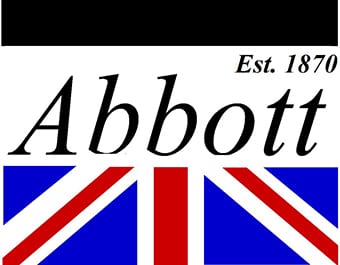Recast of Pressure Equipment Directive
David Hardacre, Lead Specialist – Design Appraisal
Pressure Vessel Manufacturers Forum: 2nd July 2014
Recast of Pressure Equipment Directive: PVMF July 2014
Pressure Equipment Directive – The story so far…
• The PED (97/23/EC) was adopted by the European Parliament and European
Council in May 1997
• Entered fully into force in May 2002.
• The study, “Evaluation of the Pressure Equipment Directive” was conducted
for the European Union between November 2011 and October 2012.
• The purpose of the study was to assess how, and to what extent, the
Directive has met its objectives (free circulation of pressure equipment
whilst ensuring a high degree of safety).
Recast of Pressure Equipment Directive: PVMF July 2014
Pressure Equipment Directive – Conclusions of the study
The positives
• PED has succeeded in removing barriers to trade.
• Maintained high levels of product safety.
• Generally clear and the PED fits into a relatively stable and coherent
regulatory environment.
• Strong growth within the industry (weighted average growth for the
industry between 1995 and 2010 is 57% compared with 32.1% for the EU
economy).
• The classification system (based upon the fluid contained and stored energy)
is regarded as having been a sensible system to adopt.
Recast of Pressure Equipment Directive: PVMF July 2014
Pressure Equipment Directive – Conclusions of the study
The concerns
• There are a number of barriers that hinder the performance of the
Directive. Whilst in some specific cases these have serious implications, they
should not be considered as constituting a widespread failure with the
Directive.
• Weaknesses and inconsistencies in the implementation of the legislation
across the Member States and between Notified Bodies has led to noncompliant
or potentially harmful products appearing on the market.
• The quality of market surveillance varies across Europe.
• The delocalisation of production to low cost centres presents a number of
challenges for the consistent implementation of the PED.
• To date, not a single manufacturer of non-conforming products that carried
serious safety failings has been convicted through legal processes.
• Despite the perceived advantages of EN standards their uptake by European
industry has so far been partial.
Recast of Pressure Equipment Directive: PVMF July 2014
Pressure Equipment Directive – Conclusions of the study
Recommendations
• Member States should ensure that national market surveillance authorities
fulfil the expectation that they make use of the safeguard procedure when
non-conforming products are identified.
• The EC standardisation process would be better supported through greater
involvement of a wider variety and larger number of pressure equipment
stakeholders.
• CEN, Member States and Notified Bodies should promote the uptake of EN
standards by users.
• The Commission and Member States need to consider the use of appropriate
legal action, where serious failings are discovered.
• Notified Bodies should be monitored in line with the requirements of the
PED and accreditation bodies should exercise their powers of withholding or
suspending operating certificates if problems are identified.
• Align the PED to the New Legislative Framework (NLF).
Recast of Pressure Equipment Directive: PVMF July 2014
Pressure Equipment Directive – New Legislative Framework
• Alignment of the PED to the New Legislative Framework (NLF) includes the
Classification, Labelling and Packaging (CLP) Regulation (1272/2008/EC ).
• The CLP Regulation will replace the current classification under the
Dangerous Substances Directive (DSD) 67/548/EEC. This will be over a
transitional period that will end on 31 May 2015.
• This affects the PED because PED categorisation depends, among other
things, on the Fluid Group (Group 1 or 2).
Recast of Pressure Equipment Directive: PVMF July 2014
Pressure Equipment Directive – Fluid Categorisation
Current System
• According to Article 9 of Directive 97/23/EC, the ‘fluids’ are divided into two
groups:
• Group 1 comprises the following ‘dangerous fluids’, as classified on the
basis of their intrinsic properties and the degree and specific nature of
the hazards involved in Directive 67/548/EEC: explosive, extremely
flammable, highly flammable, flammable, very toxic, toxic and
oxidising.
• Group 2 comprises all other fluids not referred to in Directive 97/23/EC
as ‘dangerous’.
Recast of Pressure Equipment Directive: PVMF July 2014
Pressure Equipment Directive – Fluid Categorisation
New System
• Group 1 fluids consisting of hazardous substances and mixtures of Article 2
of the CLP Regulation (1272/2008)
substances and mixtures which in contact with water emit flammable
gases, category 1, 2 and 3
flammable liquids, category 3 where the maximum
allowable temperature is above the flashpoint
flammable gases, category 1 and 2 flammable solids, category 1 and 2
oxidising gases, category 1 pyrophoric liquids, category 1
flammable liquids, categories 1 and 2 pyrophoric solids, category 1
unstable explosives or explosives of Divisions 1.1, 1.2, 1.3, 1.4 & 1.5 self-reactive substances and mixtures, type A to F
oxidising liquids, category 1, 2 and 3 organic peroxides types A to F
oxidising solids, category 1, 2 and 3 acute oral toxicity: category 1 and 2
acute inhalation toxicity: category 1, 2 and 3; acute dermal toxicity: category 1 and 2
specific target organ toxicity – single exposure: category 1.
Recast of Pressure Equipment Directive: PVMF July 2014
Pressure Equipment Directive – Timeline
• The recast Pressure Equipment Directive was published in the EU Official
Journal L189 on 27th June 2014 (pages 166-261).:
http://eur-lex.europa.eu/legal-content/EN/TXT/PDF/?uri=OJ:L:2014:189:FULL&from=EN
• Member States have until 28th February 2015 to implement Article 13
(alignment with the CLP).
• Article 13 will apply from 1st June 2015.
• The rest of the new Pressure Equipment Directive (2014/68/EU) is to be
implemented by 18th July 2016.


Recent Comments